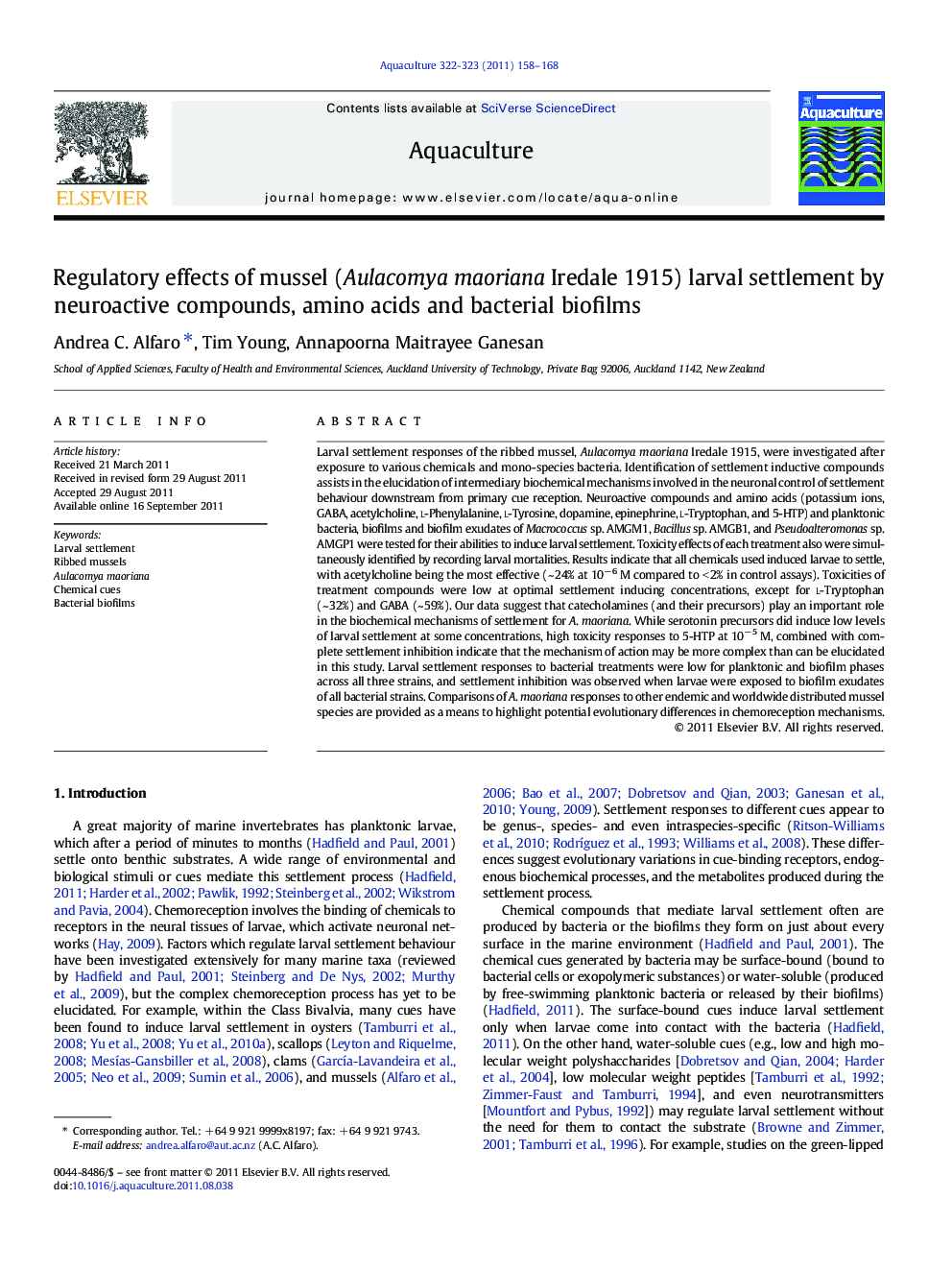| Article ID | Journal | Published Year | Pages | File Type |
|---|---|---|---|---|
| 2422819 | Aquaculture | 2011 | 11 Pages |
Larval settlement responses of the ribbed mussel, Aulacomya maoriana Iredale 1915, were investigated after exposure to various chemicals and mono-species bacteria. Identification of settlement inductive compounds assists in the elucidation of intermediary biochemical mechanisms involved in the neuronal control of settlement behaviour downstream from primary cue reception. Neuroactive compounds and amino acids (potassium ions, GABA, acetylcholine, l-Phenylalanine, l-Tyrosine, dopamine, epinephrine, l-Tryptophan, and 5-HTP) and planktonic bacteria, biofilms and biofilm exudates of Macrococcus sp. AMGM1, Bacillus sp. AMGB1, and Pseudoalteromonas sp. AMGP1 were tested for their abilities to induce larval settlement. Toxicity effects of each treatment also were simultaneously identified by recording larval mortalities. Results indicate that all chemicals used induced larvae to settle, with acetylcholine being the most effective (~ 24% at 10−6 M compared to < 2% in control assays). Toxicities of treatment compounds were low at optimal settlement inducing concentrations, except for l-Tryptophan (~ 32%) and GABA (~ 59%). Our data suggest that catecholamines (and their precursors) play an important role in the biochemical mechanisms of settlement for A. maoriana. While serotonin precursors did induce low levels of larval settlement at some concentrations, high toxicity responses to 5-HTP at 10−5 M, combined with complete settlement inhibition indicate that the mechanism of action may be more complex than can be elucidated in this study. Larval settlement responses to bacterial treatments were low for planktonic and biofilm phases across all three strains, and settlement inhibition was observed when larvae were exposed to biofilm exudates of all bacterial strains. Comparisons of A. maoriana responses to other endemic and worldwide distributed mussel species are provided as a means to highlight potential evolutionary differences in chemoreception mechanisms.
► Neuroactive compounds, amino acids, and biofilms induce mussel larval settlement. ► Catecholamines play a role in the biochemical mechanisms of A. maoriana settlement. ► Settlement responses to serotonin precursors resulted in high toxicity responses. ► Settlement was low with planktonic bacteria and biofilm phases. ► Biofilm exudates resulted in settlement inhibition.
